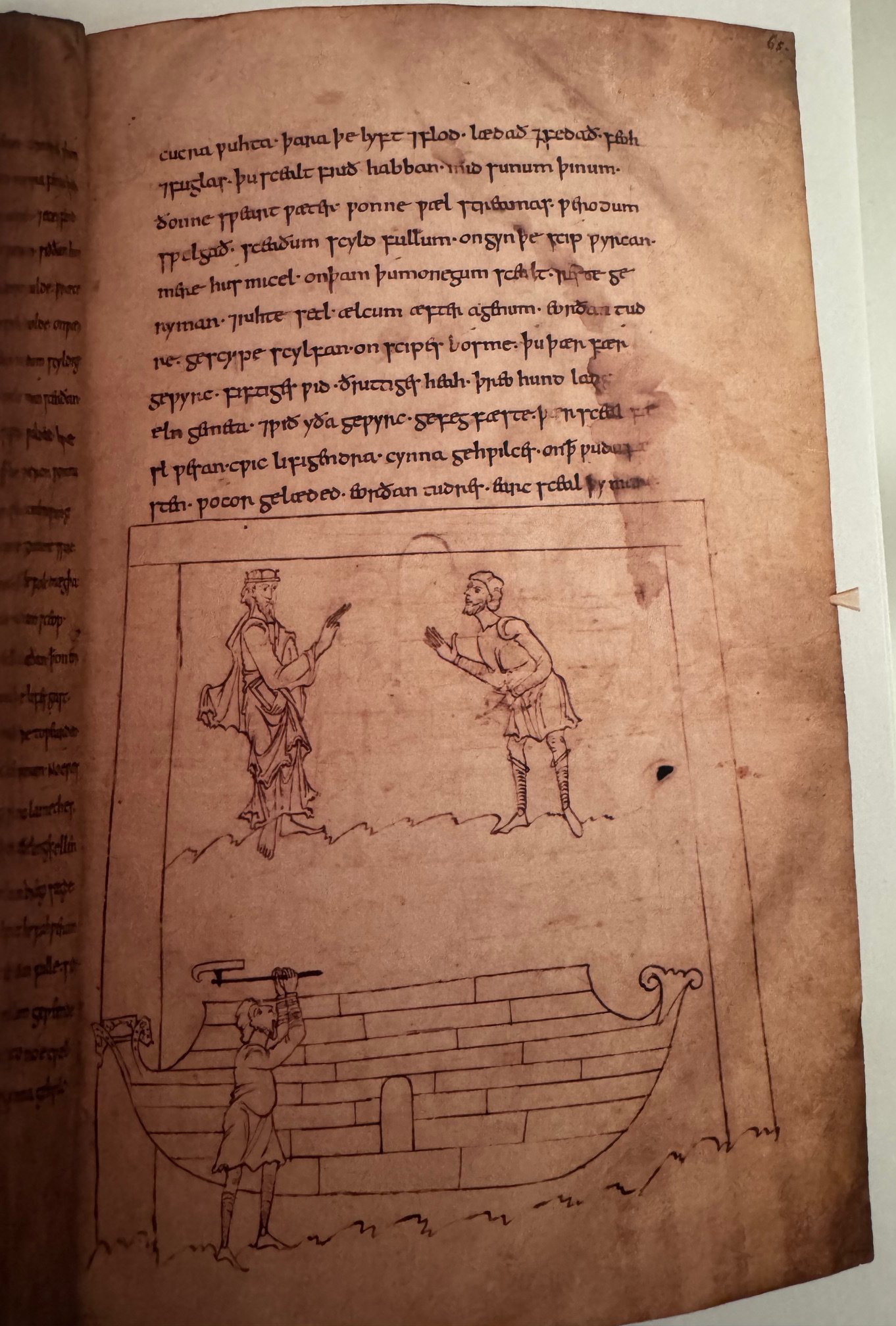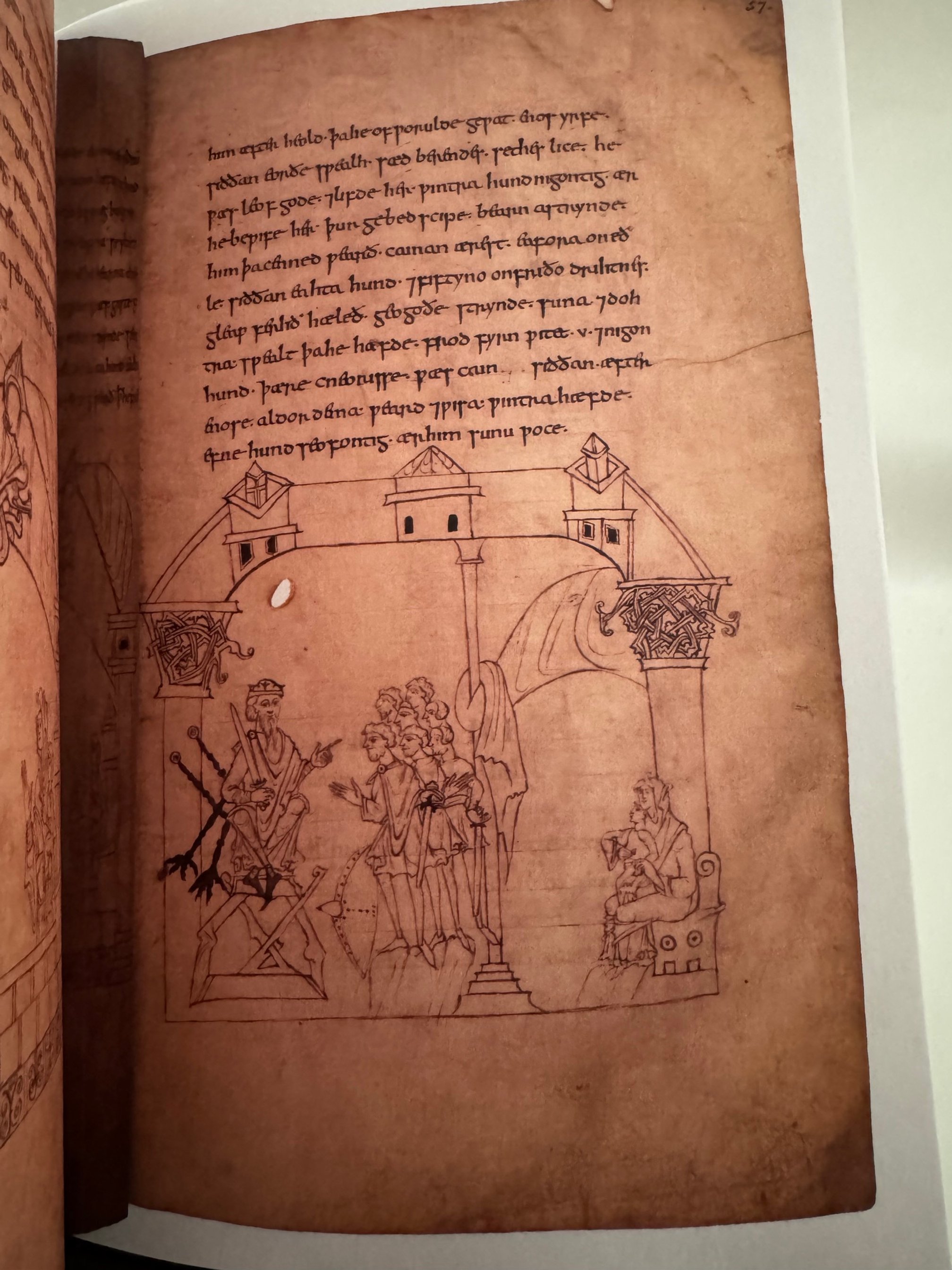MS. Junius 11 - 10th or 11th Century (Cædmon Manuscript)






MS. Junius 11 - 10th or 11th Century (Cædmon Manuscript)
Name: Junius Manuscript or the Cædmon Manuscript
Date: 10th or early 11th Century
Language: Old English
Original Manuscripts Physical and contents description:
MS. Junius 11, is a significant Old English codex housed in the Bodleian Library at the University of Oxford. Commonly known as the "Cædmon Manuscript" or the "Junius Manuscript," it is one of the four major poetic manuscripts in Old English literature.
Historical Context and Significance:
Compilation and Dating: Scholars date the manuscript to the late 10th or early 11th century. It comprises a collection of Old English biblical poetry, presenting paraphrases and interpretations of various books from the Old Testament.
Contents: The manuscript contains four major poetic works:
Genesis: A poetic retelling of the first book of the Bible, detailing the creation of the world, the fall of man, and other early biblical narratives.
Exodus: An account focusing on the departure of the Israelites from Egypt, emphasizing themes of liberation and faith.
Daniel: A rendition of the biblical Book of Daniel, highlighting the trials and faith of Daniel and his companions.
Christ and Satan: A poetic work that explores the themes of Christ's temptation, his harrowing of hell, and the final judgment.
Attribution: The manuscript was once attributed to Cædmon, an early English poet mentioned by the Venerable Bede. However, modern scholarship suggests that the works are likely the contributions of multiple authors, and the exact origins remain a topic of academic discussion.
Physical Description:
The manuscript is written on parchment and showcases the characteristic insular script of its time. It features a series of illustrations accompanying the texts, providing visual interpretations of the biblical narratives.
Provenance:
The manuscript derives its name from François du Jon, known as Junius, a 17th-century scholar who once owned the manuscript. He donated it to the Bodleian Library in 1651, where it has since been preserved.
Reproduction Details: Our hardcover books are crafted with meticulous attention to detail and a commitment to quality. The front and back covers, along with the spine, are made from real wood, giving each book a sturdy and authentic feel. We use 4-ounce cowhide leather, sourced from a small supplier in North Carolina, to encase the covers. The leather is carefully adhered with glue and skillfully molded into shape by our local artisans.
The pages, or signatures, are hand-sewn using a traditional library binding method, ensuring durability and a timeless aesthetic. The sewn book block is secured with a strong adhesive glue, designed to reinforce the bindings, especially for larger volumes. To add even more strength, we layer a thick mull cloth over the binding, allowing each layer to dry thoroughly. This traditional technique ensures the binding is stiff, strong, and resilient, capable of enduring for generations to come.
NOTE: ALL OF OUR FACSIMILES ARE MADE TO ORDER. PLEASE ALLOW 4-6 WEEKS FOR NOTIFICATION OF SHIPMENT.

